Thanks to reader Steven B, I have a couple additional documents on the Stoner 63 to post, and also a cleaner copy of the Stoner LMG manual. Thanks, Steven!
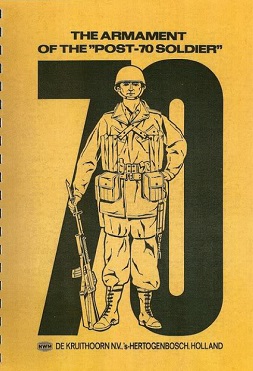
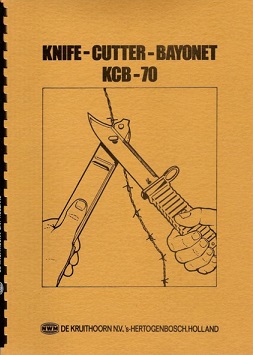
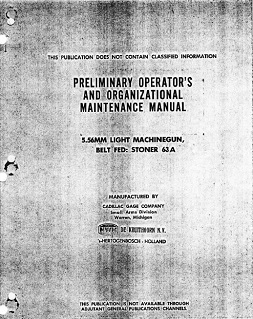
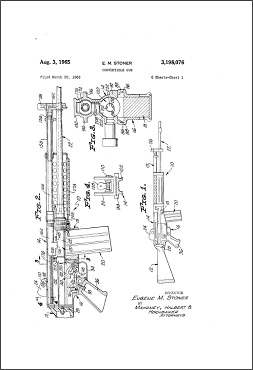
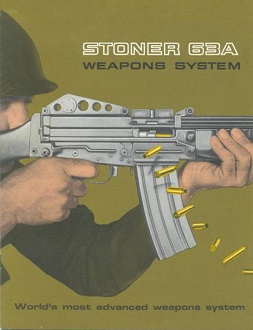
Thanks to reader Steven B, I have a couple additional documents on the Stoner 63 to post, and also a cleaner copy of the Stoner LMG manual. Thanks, Steven!





© 2025 Forgotten Weapons.
Site developed by Cardinal Acres Web Development.
At SOME point in time a “Bayonet” is a knife that doubles as a wire cutter.
When was the last time in combat that soldiers fixed them on a rifle to alter the outcome of a battle? 1863?
“When was the last time in combat that soldiers fixed them on a rifle to alter the outcome of a battle? 1863?”
I dunno, 2009? http://news.bbc.co.uk/2/hi/uk_news/8252974.stm
Also from 2004 http://news.bbc.co.uk/2/hi/uk_news/8016685.stm
1995 by the French in Sarajevo http://www.granules-pellets.latretoire.org/video/PAPox1A3F6U/French-peacekeepers-assault-on-the-Vrbanja-bridge-Bosnian-war.html
1982 in the Falklands https://en.wikipedia.org/wiki/Battle_of_Mount_Tumbledown#Left_flank
In 1951 Lew Millett in Korea http://www.history.army.mil/html/moh/koreanwar.html#MILLETT
All well after 1863
It was 2011, actually. One could argue the bayonets were not so essentially in that engagement, but they certainly were in for the Scottish Argylls in 2004, in Basra, Iraq.
I read this and previous references…. there is a dose of drama in it, no doubt. One thing though is difficulty to imagine how useful was bayonet on Famas or SA80 – not much. I bet soldiers wished to have FAL instead.
On the other hand I recall what my grandpa told me about ‘storms’ they did on Italian front – it was often with “sturm-messer” in hand in addition to fixed bayonet. That’s face of war, as real as you can get.
They are good to fix the mind of soldiers into attack mode i.e. Charge! Regardless of if they stab someone by the end of the engagement – Which they might do, so that’s handy.
If it cuts wire it’s even handier…
An example of there use in recent times would be the Battle of Danny boy in Iraq, were there use was handy probably. And indeed with regards them being a handy weapon of necessity, during the battle of Tumbledown ammo was apparently running low up near the summit.
“When was the last time in combat that soldiers fixed them on a rifle to alter the outcome of a battle? 1863?”
http://militaryhistorynow.com/2014/01/17/stickin-it-to-em-the-last-of-the-great-bayonet-charges/#14267020930691&event=tpLoaded&height=732&cb=false
The Dutch Future Soldier 1970 doc was cool. The fact that every man in the squad has some limited anti-armor capability (muzzle launched AT rifle grenade and/or separate mag of 10 rounds of 5.56 AP) shows the focus on the threat of a Soviet armored thrust into Western Europe.
The “mini grenade” bandolier and hand held red phosphate flame launcher thing were also interesting.
As the material states, it would have been a well-armed squad indeed.
Ian, you have got to get your hands on a Stoner63 and make a video! Also an FN BAR would be awesome as well.
Regarding the usefulness of bayonets, there are at least 3 situations where I would use a bayonet:
1) Advance to contact – running and having to dive down onto the ground can result in the barrel of the rifle being plugged with earth. The bayonet will help protect the muzzle on tis scenario.
2) Street fighting – negotiating a corner, an enemy can grab th muzzle of the rifle. A bayonet can deter this and if the enemy DOES grab the rifle near the muzzle, the leverage can be used to stick him with the bayonet
3) Crowd control – bullets are invisible, a bayonet isn’t and the sight of someone fixing bayonets and advancing towards you wit the intenton of sticking you concentrates the mind wonderfully.
The British soldiers hated the spike bayonet issued with the Lee Enfield No. 4 for that reason and it was replaced by a blade type for the intimidation factor. It was useless as a substitute knife and the EM1 and EM2 and the FAL adopted by the UK reverted back to a knife type.
Bayonets have generally fallen out of favor these days because they’re a liability in the kind of close combat people actually get into – inside tight spaces. Try to pie a corner or do reflex shooting with a rifle with a bayonet on it and you’ll see what I mean.
British practices notwithstanding, I think I’d have the advantage swinging my K-bar over someone trying to stab me with a bayoneted L85.
If you carry a Ka bar, you can carry a bayonet, a ka bar you can if you so wish stick on the end of your weapon.
The L85 bayonets are thick, but they can be sharp, harder to penetrate with your arm behind it although it wouldn’t be healthy for the target even with a small arm behind it, but with it attached to the “brick” i.e. The L85 it will go in like a hot knife through butter, then you twist – Hence the angled thick part, holes etc.
You can detach them you know.
…and then you stick your arm out and this happens to the fellow trying to bayonet you with a bullpup rifle.
https://youtu.be/RI0i_tL-8aU?t=2m30s
Health and safety gone mad.
During my time in service (with one of WP armies) we put on bayonet automatically even during range practice. It was good balancer as a matter of fact. Same with sentry duty – bayonet was on and full mag inserted.
Speaking of cold steel, an uneducated viewer would likely think that the Japanese Type 30 bayonet (a sword bayonet, mind you) would be useless when fixed on the Type 38 Arisaka rifle. Considering that the Japanese did treat long rifles with sword bayonets as glaives rather than thrusting spears, you might not want to try any fancy spear limbo moves (especially if you are riding a horse while avoiding that 40 cm steel blade). The Type 30 bayonet handles like a short sword when not fixed so I would hate to get into a knife fight with a Japanese holdout…
As for the Stoner M63, didn’t it flop due to issues with availability of parts and modules?
“As for the Stoner M63, didn’t it flop due to issues with availability of parts and modules?”
As I recall, it was also heavy for the caliber… not to mention the fact that it was a late comer fighting a deluge of Kalashnikovs, M-16s, FALs and H&Ks. This was a situation which killed a bunch of post-WWII smgs that couldn’t compete against a mountain of WWII surplus smgs available at bargain prices or indeed sometimes free of charge.
Never had a problem with my Stoner. No one in my platoon had problems either. I was a SEAL in RVN in 1971.
The Stoner was/is ridiculously light for a belt-fed machine gun. The M249 (winner of the SAW program) is much heaver, taller, and wider. I think the Stoner might actually have a heavier barrel than an M249 barrel of equal length. There were a bunch of technical problems with the 63, and I believe it was out of the running by the early 70s. Dan Shea has many, many documents relating to that weapon in the archives section of Small Arms Review.
Barrel was not only heavier but also longer. On Minimi is some 17in, on Stoner (according to first document) is 20in.
On LSW/ SAW type of thing longer barrel makes lots of sense, see RPK74.
Never had a problem with my Stoner. No one in my platoon had problems either. I was a SEAL in RVN in 1971.
“Modular” is a buzz word these days… The terms, definition has some uses but a 5.56mm LMG isn’t one – You need 7.62 Nato for a support weapon.
A Bren would be more effective than a Mini me, less rounds, but different rounds, rounds with oomph.
Sixty three was ‘over-modular’ imho; otherwise darn cleaver design.
Yes it’s good isn’t it…
Did make me think about getting a hang fire in combat, on the range your supposed to wait ten seconds before doing anything incase it goes off during that time. Might seem a bit long in combat, it doesn’t happen much as far as I’m aware. A two chambered chamber, falling block might be of benefit drop it with the dud in then carry on with the top chamber – Obviously it would need to be clear to it’s front, of the fore stock you hand etc and have a solid portion of the frame to it’s rear.
Cook offs also… What’s a heat exchanger, never mind. Anyway maybe you could keep the chamber cooler than the barrel if it was a separate piece. Most of the flames go forward of the chamber upon firing into the barrel, you can use floating chambers as a method of operation can’t you actually.
One this I am noticing on 63 rifle: butt was folding left. I guess there was no other choice, if user wanted to fire when folded (assuming RH ejection).
This was first time I was able to see ‘inside’ of Stoner 63 system. Closest one I can think of is FN CAL, which also did not make it. Much appreciate it.
Very interesting publications, thank you.